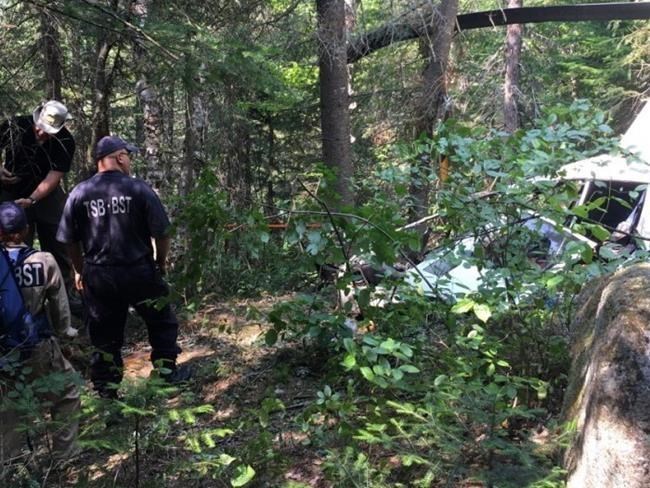MONTREAL — A Quebec coroner is recommending the province adopt legislation allowing authorities to quickly obtain cellphone data and other relevant information in missing persons cases.
The recommendation is in a report released Wednesday into the deaths of Quebec businessman Stephane Roy and his teenage son, Justin Roy Seguin, 14, who died in a July 2019 helicopter crash on their return from a fishing trip.
Roy, 55, was the founder and owner of Les Serres Sagami, which produces greenhouse-grown tomatoes under the Savoura brand. The bodies of Roy and his son were found along with the downed chopper in a wooded area near Lac Valtrie, Que., about 220 kilometres northwest of Montreal, 14 days after they were reported missing.
Authorities had trouble securing cellphone data belonging to Roy and his son, from Telus, which delayed efforts to find the missing Robinson R-44 helicopter, coroner Denyse Langelier said in her report.
Quebec provincial police obtained numbers linked to cellphones of the victims, but on July 17, the provider refused to collaborate further and said it was no longer an urgent matter. The coroner noted that police weren't able to obtain a judicial authorization because their probe was not criminal.
Telus ultimately agreed to a request from Roy's wife, on humanitarian grounds, and released more information.
"In the light of these laws, it is clear that there is a legal vacuum as to the powers of the police to compel a private company to provide them with personal information in the event of an investigation aimed at finding a missing person in the absence of criminal elements," the coroner's office said in a statement Wednesday.
"If such legislation existed, the police could have obtained from Telus all the information to locate the deceased's cellphones and thus find the occupants of the helicopter in a shorter time."
Langelier called for the government to adopt legislation permitting police to quickly obtain telephone communications and information on cellular signals to determine the location of a missing person. The law could extend to other elements including photos, videos, and social networking activity, she said.
Telus said in a statement it followed the legal framework and stated procedures by co-operating with authorities from the moment they asked for assistance with the investigation.
"We went beyond the call of duty by providing an expert on-site who was directly involved in the search for the helicopter," wrote Jacinthe Beaulieu, a Telus spokeswoman in an email late Wednesday.
"We have a long tradition of co-operation when it comes to helping authorities in situations like this one."
Telus cited a report by the TSB that said the company provided all the data that was requested.
The pair were reported missing on July 11 — one day after they failed to return home to Ste-Sophie, Que., north of Montreal, from a fishing trip.
In a separate report released Wednesday, the Transportation Safety Board of Canada attributed the cause of the crash of the privately-owned helicopter to main rotor blade failure. The agency said one of the blades had worn out over time due to multiple adhesive failures.
"The investigation determined that a sudden increase in these failures likely contributed to significantly reducing the stiffness of the blade, causing severe vibrations," the TSB report read. "The rotational speed of the main rotor then fell too low, preventing the aircraft from remaining in flight."
The board said the missing helicopter was found by police, who used data from the occupants’ cellphones to perform several triangulation calculations. Authorities were able to identify a point just 193 metres from the wreckage.
No emergency locator transmitter signal was detected and the TSB said it found that the locking latches between the "off"' and "arm'' positions of the transmitter were broken, allowing the switch to flip freely between the two.
Early in its probe, the TSB had found the transmitter was functional, but that it switched off with minimal force. The manufacturer of the transmitter has since added a warning about the switch.
In its final report, the TSB also noted that no flight plan or itinerary had been filed by Roy.
"In such situations, there is a risk that a search will not be initiated within a reasonable time frame, especially if no (emergency locator transmitter) signal is detected, which reduces the occupants’ chances of survival and deprives search and rescue teams of important information needed for the search," the report said.
This report by The Canadian Press was first published March 31, 2021.
Sidhartha Banerjee, The Canadian Press




